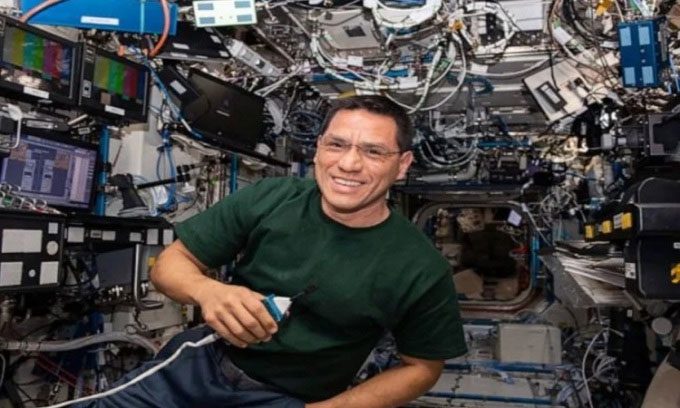Astronauts Experience Significant Psychological and Physiological Changes During Extended Time in Microgravity.
After spending 371 days in space, NASA astronaut Frank Rubio returned to Earth on September 27. The 47-year-old man broke the record for the longest time spent in space by an American astronaut earlier this year after his initial 6-month mission on the International Space Station was extended by another 6 months. Rubio and his colleague landed at 6:17 PM on September 27, according to Hanoi time, in southeastern Dzhezkazgan, Kazakhstan, as reported by NASA.

Astronaut Frank Rubio on the ISS. (Photo: NASA).
In an episode of Good Morning America in August, Rubio shared that upon his return, the medical team would conduct health checks on him. He will need some time to readjust to Earth’s gravity and recalibrate his balance for daily activities like walking and standing upright.
Experts note that spending an extended period in space, especially for a year, entails numerous changes to human psychology and physiology. One of the most significant changes comes from the microgravity environment, which allows astronauts to float inside the spacecraft or outside during spacewalks. During this time, astronauts experience muscle atrophy and osteoporosis due to reduced usage and lack of stimulus from exercise equipment.
According to Dr. Jennifer Fogarty, the chief scientist at the Space Health Research Institute at Baylor College of Medicine, the most significant changes in bones and muscles occur within the first two months of the mission and then stabilize gradually. One of the challenges crew members often face upon returning to Earth is the vestibular challenge, which affects how the body maintains spatial awareness and balance as gravity changes.
“How do you coordinate movements like walking, something you haven’t done for an extended period, and then maintain balance?” Fogarty explains. “Combining these elements can create a somewhat dangerous situation.” The longer the mission, the longer the time required to adapt to the environment. Missions lasting 4-6 months require a recovery time of 2-3 days, while longer missions will certainly demand a longer adaptation period.
Additionally, due to the weightlessness characteristic of the microgravity environment, blood and cerebrospinal fluid often shift upward from lower points in the body to the head and eyes, causing changes to the structure of the eyes and brain. This phenomenon is known as Neuro-ophthalmic Syndrome, associated with space travel, where astronauts on long-duration flights may experience a variety of changes, including brain displacement, swollen eyes, and blurred vision.
“Our blood vessels have valves to prevent blood from flowing backward when we stand up, but in a microgravity environment, there is a significant fluid shift from the body to the head,” explains Dr. Michael Decker, co-director of the Aerospace Physiology Center at Case Western Reserve University. “An increase in intracranial pressure can affect the eyes, leading to vision impairment. Sometimes, when astronauts land, that vision impairment may not recover.”
Being in a closed-off environment for an extended period can also bring about many other psychological and physiological effects. Studies indicate that this type of environment can lead to behavioral changes and cause fatigue, stress, and insomnia. According to Fogarty, the immune system also changes during time spent in space, a result of prolonged stress. Therefore, creating the healthiest possible environment for astronauts on missions is crucial.
Scientists will investigate whether Rubio has experienced any genetic changes, including those related to the immune system, similar to what astronaut Scott Kelly encountered after living in space for 340 days from 2015 to 2016. According to Decker, 90% of the changes adjusted back within a few months after Kelly returned to Earth. Although the space environment is extremely harsh, the changes astronauts experience remain within expected parameters, and NASA always ensures they are adequately prepared before flying into space.


















































